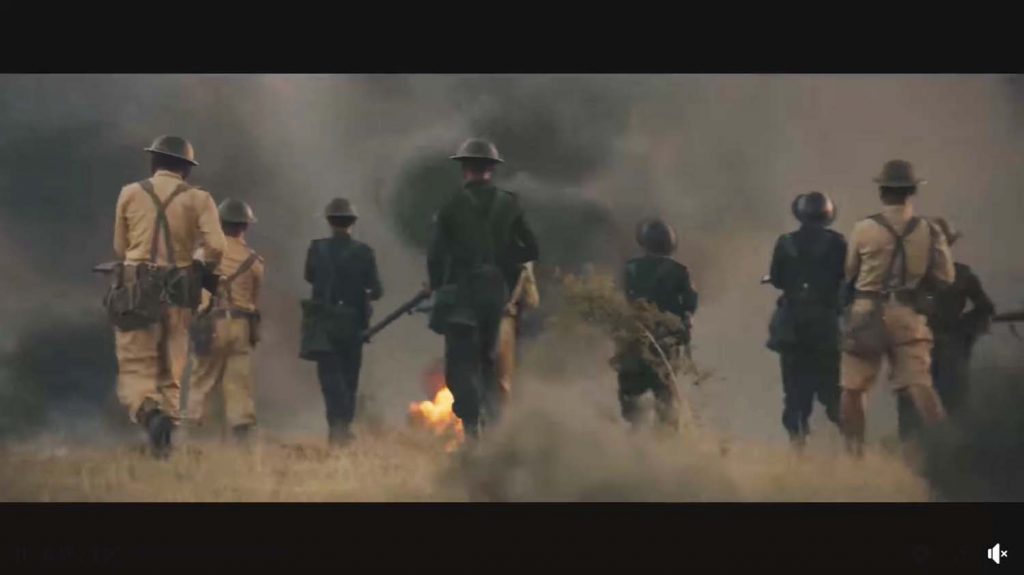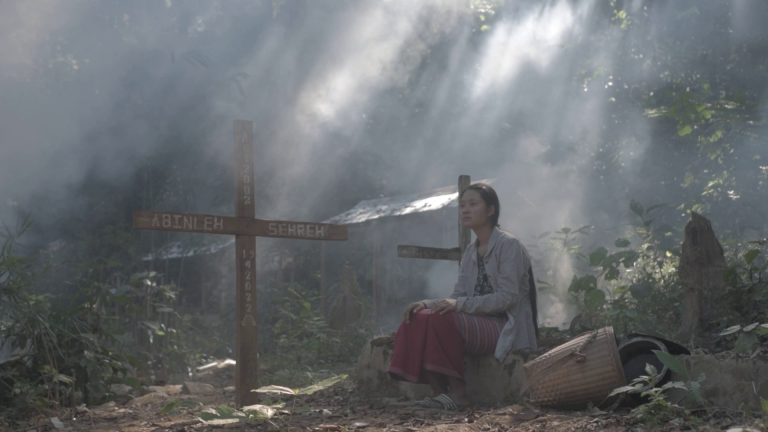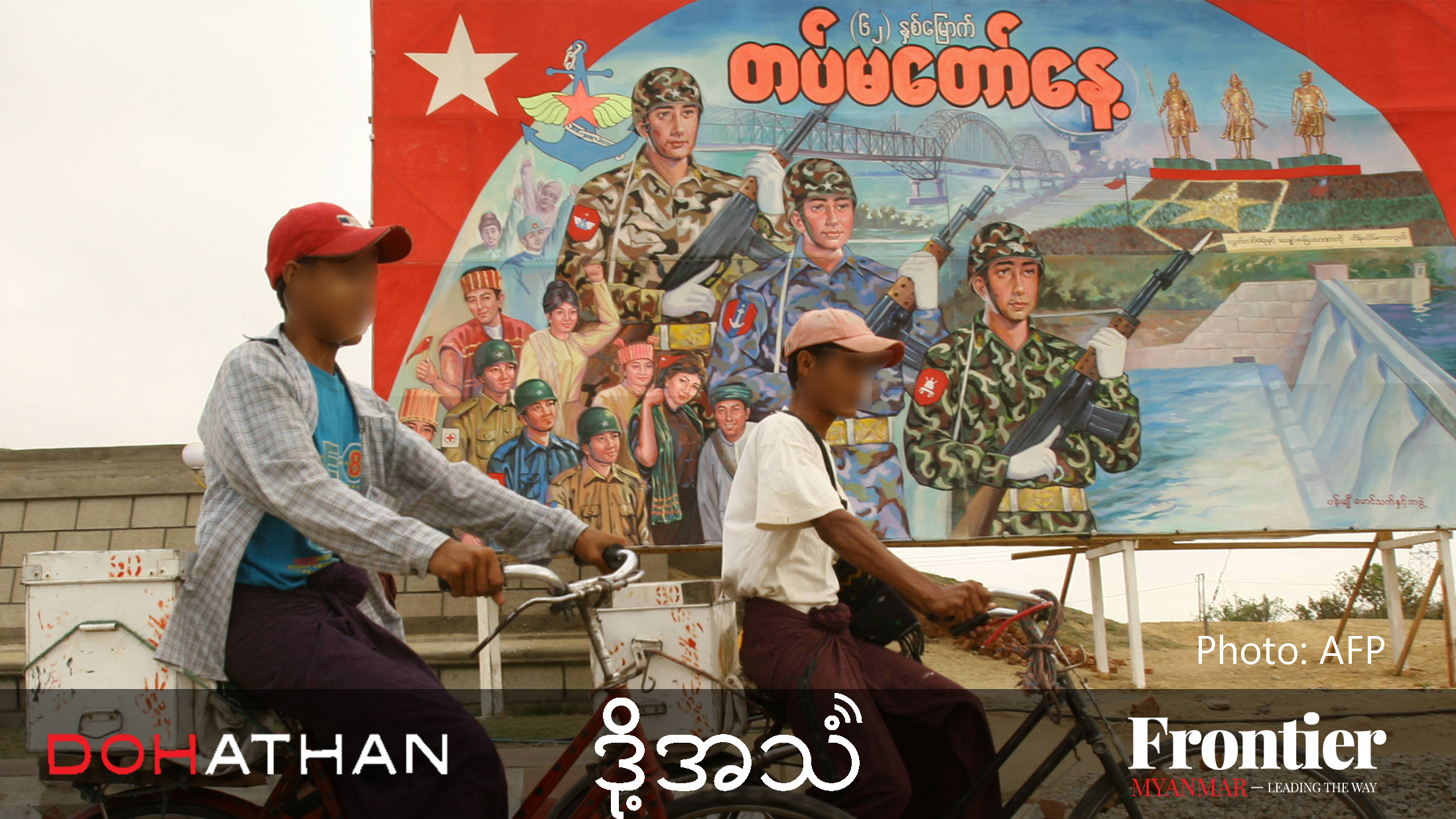A television drama that extols the role of the Tatmadaw in Myanmar’s modern history is a failure of art and propaganda but provides insights into the psychology of the armed forces.
By SAR PHYU | FRONTIER
We tend to fall in love with films that move our hearts as well as our minds, and can unwittingly ingest all sorts of ideology in this way. Understanding this, Myanmar’s armed forces have for decades tried to woo citizens over to its own vision of itself and its role in the country’s modern history through the power of cinema and television. But with cliched characters, unnatural dialogue and contrived plots, it has largely bungled these attempts.
Handsomely financed propaganda movies are often released to commemorate Armed Forces Day, which is marked on March 27 each year. The extravagant, star-studded Epic of Stars, released in 2013, distracts us from the Tatmadaw’s brutality in suppressing the 1988 national uprising in urban areas by focusing on a battle between the Tatmadaw and the Karen National Union that happened shortly afterwards. The faceless narrator briefly addresses the bloodstained history of the 8-8-88 uprising, which ended with a military coup, by saying, “The Tatmadaw had to take responsibility and protect the country.”
This year, for the 75th anniversary of Armed Forces Day – originally called Resistance Day to commemorate the revolt against the occupying Japanese in World War Two – Tatmadaw propagandists opted for the more ambitious format of a 13-part TV drama. Legends of Warriors is a historical drama that screened on military-owned Myawaddy Television and MRTV-4, a joint venture between the government and private company Forever Group, between March 4 and 27 and was promoted by an aggressive marketing campaign.
But despite its multi-decade narrative, ranging between 1947 and the present day, and its relatively lavish production values and star-filled cast, this paean to the military’s ostensible virtues and achievements represents more of the same. The drama, with its trite dialogue, overblown set pieces and nakedly partisan presentation of history, makes clear that the Tatmadaw has yet to master the subtle art of indoctrination.

In Legends of Warriors, the Tatmadaw’s infamous role in 1988 is described as being necessary “to protect the country from falling into enemy hands”. Many in the TV audience might be expected to roll their eyes, hearing this line more than four years into the term of a popularly elected government whose leaders were heavily involved in the 1988 uprising,
However, in a year when the National League for Democracy is expected to win another election, Legends of Warriors provides a useful insight into how the still-powerful military thinks of itself during changed times, even if the power of its propaganda is doubtful.
One of the main characters in the drama is Aye Mya Thu, a young woman living in the present day who has a crush on the boy living next door – an aspiring military officer who deems his life “to be made for the Tatmadaw”. Her innocent infatuation evolves into a deeper personal devotion for the military when, “feeling the military blood” inside her, Aye Mya Thu also enlists in the Tatmadaw. The same blind love motivates most characters in Legends of Warriors and is presented as an example of how patriotic citizens should regard the armed forces.
Even Karen characters in the drama love the Tatmadaw, despite the war between Karen insurgents and the Tatmadaw. Naw Lay Phaw, a Karen nurse who is saving Tatmadaw lives during fighting with the Karen National Defence Organisation on Rangoon’s outskirts in late 1948, is portrayed as a big-hearted angel whose eyes are always filled with tears because she “can’t bear the sight of Tatmadaw soldiers suffering”.
The drama assures viewers via one of the principal characters that the “Tatmadaw does not harbour any hatred for the Karen”; its attempt to crush the Karen pursuit of greater autonomy is based on the need to save Myanmar “from shattering into pieces”. A Karen officer in the Tatmadaw is shown shedding tears when he was prevented from joining battles against the KNDO. Moments before he is taken to a detention camp for Karen on suspicion that he might join the rebels, the Karen Uncle Tom declares that “he is loyal to the Tatmadaw for eternity”.

The devotion shown by these characters is presented as a part of a wave of patriotism in society that verges on hysteria. One scene shows a crowd of civilians cheering recruits being trained to fight the KNDO; another shows a young recruit’s euphoria at being able to fire a rifle in two days and “feeling so itchy to fight war”. In another scene viewers are shown a hawker who abandons his stall and runs to an army training ground, shouting that he wants to enlist.
Worship of the Tatmadaw is often paired with a belief in the transcendent virtues of war. An officer named Myint Khin is committed to fighting because he believes “war can make his existence more perfect”. This trope is common in Tatmadaw cinema and is seen in one of the most popular movies, Wai Lae Hmwe Kyae Lae Hmwe (a poetic Burmese title that translates as, “Fragrant while blossoming, fragrant while falling”). The film, which earned Kyaw Hein the Myanmar Motion Picture Academy Award in 1993 for best supporting actor, has a protagonist whose greatest fear in life is “not being able to fight wars”.
Alongside unvarnished militarism, Legends of Warriors also perpetuates the Bamar chauvinism that has been implicit in the Tatmadaw’s decades-long attempt at nation-building. Karen characters speak fluent Burmese but not their mother tongue. A young girl being educated in English is criticised by her father for losing her Burmese accent and therefore her roots.
However, the series does pay homage to Russian, in recognition of Russia’s longstanding role in training Tatmadaw officers. Two army officers on a battlefield in the Kokang region of Shan State in 2015 communicate by phone in Russian to mislead their enemy, which is eavesdropping to gather information. In an earlier scene, one says, “We both studied Russian. I really like that connection.”
Among the drama’s villains are not just faceless rebel soldiers but also journalists, who are portrayed as two-faced and cowardly – unless they do the honourable thing and betray their profession. Given the spate of arrests in recent years of journalists who have probed the military’s alleged wrongdoings or interviewed its enemies, this depiction should come as little surprise to viewers.

In scenes set during the early years of independence, photojournalist Phay Khin from the fictitious Burma Slogan Publishing House reports on the fighting between the Tatmadaw and the KNDO. Phay Khin finds his efforts to portray the heroism of frontline Tatmadaw troops continually frustrated by his boss Thaung Tan, who sides with the Karen rebels.
“I want to see the news [of Tatmadaw soldiers’ sacrifices] on tomorrow’s front page!” Phay Khin says on plucking up the courage to confront Thaung Tan. “If you don’t do it, I’ll burn down the office!”
Phay Khin also announces to the office that he wants to resign and join the Tatmadaw (which he never eventually does, for reasons that are not explained). His colleague Kyaw Kyar, a fellow photojournalist, shares his frustration with the publisher’s anti-government bias and eventually does quit journalism and join the Tatmadaw. “I don’t want to the blamed if the country falls into enemy hands,” Kyaw Kyar explains.
More than just a crude caricature of the media industry in the early years of independence – when the press was plural and enjoyed a freedom that was later crushed under military rule – this portion of the drama also seems to serve as a warning to journalists in the present day of how they should behave, particularly when covering the Tatmadaw’s wars.
But as well as presenting loyalty to the Tatmadaw as the imperative of any good citizen, Legends of Warriors also casts the relationship in terms of filial attachment and obligation, in an echo of the schoolroom mantra during military rule: “Tatmadaw is the mother, Tatmadaw is the father.”

In a segment set in recent years, an army officer called Ye Lwin swallows an initial distaste for war and rises to the rank of major because of a promise he made to his soldier father. Ye Lwin, who eventually becomes devoted to the Tatmadaw, describes military service as a hereditary obligation, passed to younger generations in each family and wider society. “We have to pass down the duty,” he says. “Who will fight this war if not us?”
This same motif appears in the film Wai Lae Hmwe Kyae Lae Hmwe, though it takes it further by positing Tatmadaw service as being in the very DNA of the protagonist. The man takes up his rifle without knowing of his own estranged father’s history in the Tatmadaw.
But alongside warm feelings of attachment and lofty ideas of duty, Legends of Warriors also attempts to seed a sense of insecurity that will make ordinary citizens crave the protection of the military. This is in terms of the vulnerable individual, but also the fragile nation beset by powerful enemies within and without.
With rebels at the gates of Rangoon, photojournalist Phay Khin speaks of the feeling of security provided by the Tatmadaw, which has “stood up for the government since day one of independence”. In a scene also set in 1949, we glance a newspaper whose headline says, “The nation is going to fall off a cliff.”
This is another common trope in Tatmadaw cinema, and in Tatmadaw propaganda more broadly. The protagonist of Epic of Stars puts it most bluntly in the line, “independence is not safe yet”.
This begs the question: which needs the other more – civil war or the Tatmadaw? While this is open to debate, we can be confident that, in Armed Forces Days to come, we will be treated to more productions extolling the heroism of the military. Their power to persuade and indoctrinate will likely be no stronger than the sledgehammer messaging and histrionic storytelling of Legends of Warriors.
Sar Phyu is a Myanmar writer living in Yangon who has covered art, film and popular culture for Frontier and other outlets







